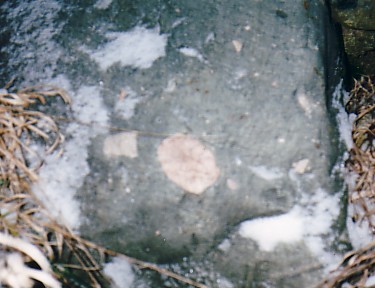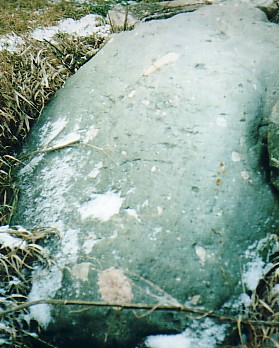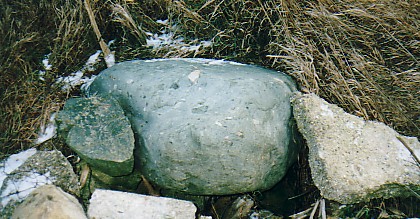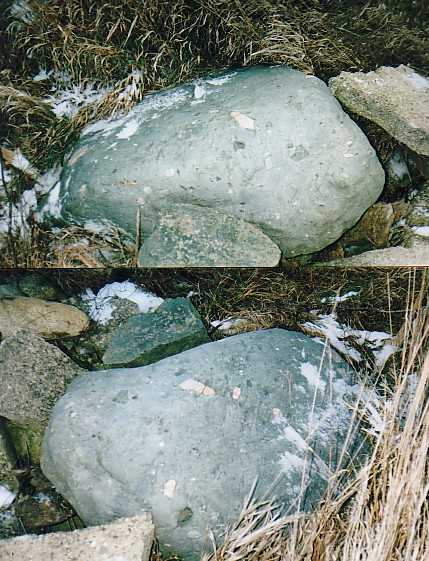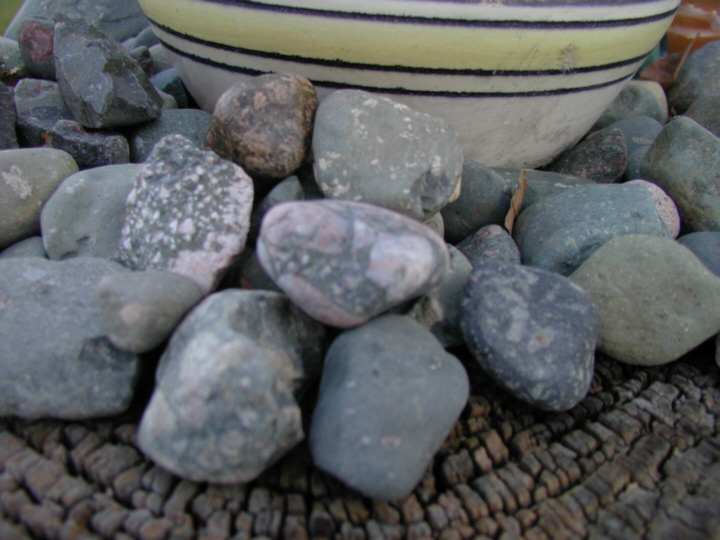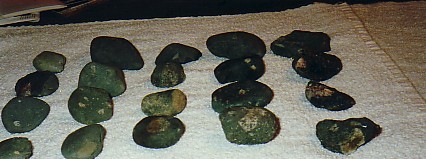|
The Ultimate Erratic? The earth is certainly no stranger to episodes of glaciation.
At least two periods of glaciation occurred in the Precambrian Era -- another at the end of the Paleozoic, and mosty recently, the Pleistocene.
The erratic boulder shown here is a product of a Precambrain glaciation in Canada. Note the granite pebbles and boulders imbedded in what is now metamorphosed till.
This boulder represents a till in Canada two billion years old that has been metamorphosed and then transported southward by the Pleistocene glaciers of a few thousand years ago.
The ancient mixed with the 'new'!
An even more striking example of the Gowganda Tillite may be seen near Potomac, Illinois, it was included as part of an ISGS sponsored field trip in 1972. This erratic lies at the end of a field waterway near Penfield, Illinois. It is being used for erosion control. The pink boulder is granite incorporated into the Canadian till over 2 billion years ago -- the granite is older yet!
The darker pebbles appear to be basalt. The flattened white specimen to the right of the tillite is Holocene concrete. :) Perhaps not the most beautiful of erratics, but unquestionably one with a fascinating story to tell!! Tillite pebbles -- many represent the Gowganda tillite, others from a tillite unit underlying the Gowganda? Tillite Specimens.
Most collected in northern Champaign county. Ultimate Erratic -- Page 2 | 
